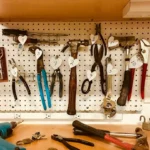Adopting an eco-friendly lifestyle is not just a trend; it’s a necessity to ensure a more sustainable future for the planet. With small changes in daily life, you can reduce environmental impact and save money. One of the most effective ways to start is through “Do It Yourself” (DIY) projects.
Here, we’ll explore how you can transform your routine with creative and eco-friendly initiatives.
Table of Contents
Benefits of an Eco-Friendly Lifestyle
Adopting an eco-friendly lifestyle brings various benefits not only to the environment but also to your health and finances. By reducing waste and reusing materials, you directly contribute to decreasing landfill waste and overall pollution.
Additionally, you can significantly save money by creating your own products and utensils. Whether in the kitchen, bathroom, or garden, eco-friendly DIY projects are a practical and viable alternative for many families.

Another important benefit is the positive impact on health. Many industrial products contain harmful chemicals. By creating homemade products, such as cosmetics or cleaning items, you avoid these components, promoting a safer environment for you and your family.
Turning Waste into Resources
An easy and creative way to start is by repurposing materials that would normally be discarded. For example, cardboard boxes can be transformed into personalized organizers, while glass jars can become decorative lamps or food containers.
The key is to look at waste with fresh eyes. Activities like making your own organic compost from food scraps not only reduce waste but also improve soil quality in your garden. Explore online tutorials and experiment with different projects to find what works best for you.
You can also reuse old clothes to create new pieces or even accessories for your home. For instance, old fabrics can be turned into cushion covers or decorative rugs, giving a second life to materials that would otherwise be discarded.
DIY for a More Sustainable Home
Creating homemade cleaning products is an effective way to make your home more eco-friendly. Many recipes use simple ingredients like vinegar, baking soda, and essential oils. These products are natural, free from harmful chemicals, and safe for children and pets.
Another idea is to invest in decorations made from recyclable materials. Cushions with reused fabrics or frames made from repurposed wood add a unique and personalized touch to your space. Small changes can have a big impact on your lifestyle.
Additionally, consider installing simple systems to capture and reuse rainwater, especially in gardens or outdoor areas. This practice reduces the consumption of potable water and is easy to implement with accessible materials.
Upcycling is another method to achieve a sustainable home. Transform old furniture into new pieces with a fresh coat of paint or new upholstery. This not only saves money but also reduces waste.
For instance, an old ladder can be repurposed into a stylish bookshelf or plant holder, combining functionality with aesthetic appeal.
Sustainable Fashion with DIY
Fashion can also be eco-friendly! Repurposing old clothes to create new pieces is a growing trend among DIY enthusiasts. Transform old t-shirts into bags or use scraps of denim to create unique accessories.
Customizing is a way to save money and reduce dependence on fast fashion brands, known for their high waste production. Additionally, you’ll be expressing your creativity and unique style while protecting the environment.
Another interesting idea is organizing a clothing swap among friends. This practice involves exchanging items you no longer use, promoting reuse and reducing consumption.
Embracing slow fashion principles can further enhance sustainability in your wardrobe. Focus on quality over quantity and invest in timeless pieces that can be styled in multiple ways. Repairing damaged clothing instead of discarding it also helps extend its lifespan and minimize environmental impact.
Eco-Friendly Gardening
Gardening is a great way to connect with nature and embrace eco-friendliness in daily life. You can create your own vertical garden using PET bottles, cans, or wooden pallets. These projects are perfect for those living in apartments or with limited space.
Growing your own herbs and vegetables is also a way to reduce the carbon footprint associated with food transportation. Besides being healthier, home gardening promotes a more balanced and conscious lifestyle.
For those with larger spaces, consider permaculture techniques, which maximize the sustainability of your garden by integrating water, soil, and plants harmoniously.
Another eco-friendly gardening idea is using natural fertilizers and pest control methods. Eggshells, coffee grounds, and banana peels can enrich your soil, while homemade sprays with neem oil or garlic can deter pests without harming the environment.
DIY for Sustainable Gifts
How about giving eco-friendly, handmade gifts? Handmade soaps, natural candles, or decorative items made from recycled materials are great options. Besides being more personalized, these gifts have a smaller environmental impact.
With easy-to-follow tutorials, you can create something meaningful and long-lasting. This is a way to encourage friends and family to adopt more sustainable practices as well.
Another interesting idea is to create themed gift kits, such as a “spa kit” with natural products or a “gardening kit” with seeds and repurposed tools.
For festive occasions, consider using reusable or biodegradable wrapping materials. Fabric wraps, kraft paper, or even old newspapers can add a rustic and eco-friendly touch to your gifts.
How to Start Transforming Your Routine
To begin, choose projects that align with your skills and available resources. Seek inspiration from blogs, YouTube channels, and social media focused on DIY. The important thing is to take the first step and explore different ways to be more eco-friendly.
Additionally, share your experiences and results. Engaging with online communities or friends can inspire others to follow the same path, amplifying the positive impact of your actions.
If you’re looking for practical ideas, check out our guide on DIY projects for beginners. This is a great starting point for those who want to incorporate simple changes into their daily lives.
Tracking your progress can also help maintain motivation. Create a checklist of eco-friendly goals and celebrate each milestone you achieve. Over time, these small changes can add up to a significant transformation.
Conclusion
Adopting an eco-friendly lifestyle with DIY is an empowering way to contribute to a better world. Small changes can make a significant difference, and creativity is the key to transforming your routine into something more sustainable and rewarding.
If you want to learn more about sustainability, check out other articles like our sustainable gardening guide and dive into this eco-friendly journey!





